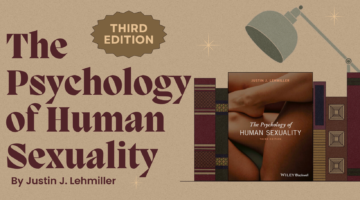Can Previous Mating Partners Influence The Traits Of Future Offspring?
October 23, 2014 by Justin Lehmiller
Centuries ago, Aristotle proposed the concept of telegony, which suggests that the traits of offspring are not only influenced by their biological parents, but also by the mother’s former mates. This idea never really caught on with scientists, though, because it failed to generate much empirical support. Indeed, so little evidence has been found for it that some encyclopedic descriptions of telegony chalk it up to nothing more than “superstition.” However, a new study just published in the journal Ecology Letters provides some provocative experimental support for telegony and suggests that we may have been too quick to dismiss this idea.
In this study, researchers created two groups of male flies of the species Telostylinus angusticollis. One group was fed a nutrient-rich diet during the larval stage, leading them to grow to a larger size. In contrast, the other group was fed a nutrient-poor diet, which stunted their growth. Next, a group of immature female flies (“immature” here meaning that they were not yet capable of reproduction) were mated with a male fly from one of the groups.
Later in the experiment, after those female flies had matured, they were mated again with a male fly from one of the two initial groups (sometimes a fly from the same group, and sometimes a fly from a different group—this is what is known as a crossed design, because all possible mating combinations were created). The researchers then looked at the traits of the resulting offspring to determine whether they were only carrying traits of the most recent mating partner (i.e., the biological male parent), or if they also carried traits from former mating partners.
Perhaps not surprisingly, DNA paternity analyses confirmed that the most recent male partner had indeed sired the offspring in the vast majority of cases. However, the scientists also found that the size of the offspring was strongly related to the size of the female’s first mating partner. At the same time, offspring size was unrelated to the size of the most recent partner, even in cases where there was definitive evidence that the most recent partner was the father. That’s right—the young flies tended to look more like mom’s first mate than they did their dads.
How do we explain this pattern of results? The researchers hypothesize that what may be going on is that the female’s eggs are absorbing molecules from the semen of their previous mates, and those molecules are having an impact on the subsequent development of the egg.
As you can see, perhaps there really is something to the idea of telegony after all. Of course, this does not necessarily mean that telegony occurs in other species, let alone humans—it simply tells us that we may have much more to learn about how traits are inherited.
Want to learn more about Sex and Psychology ? Click here for previous articles or follow the blog on Facebook (facebook.com/psychologyofsex), Twitter (@JustinLehmiller), or Reddit (reddit.com/r/psychologyofsex) to receive updates.
To learn more about this research, see: Crean, A. J., Kopps, A. M., & Bonduriansky, R. (in press). Revisiting telegony: Offspring inherit an acquired characteristic of their mother’s previous mate. Ecology Letters.
Image Credit: 123RF

Dr. Justin Lehmiller
Founder & Owner of Sex and PsychologyDr. Justin Lehmiller is a social psychologist and Research Fellow at The Kinsey Institute. He runs the Sex and Psychology blog and podcast and is author of the popular book Tell Me What You Want. Dr. Lehmiller is an award-winning educator, and a prolific researcher who has published more than 50 academic works.
Read full bio >


